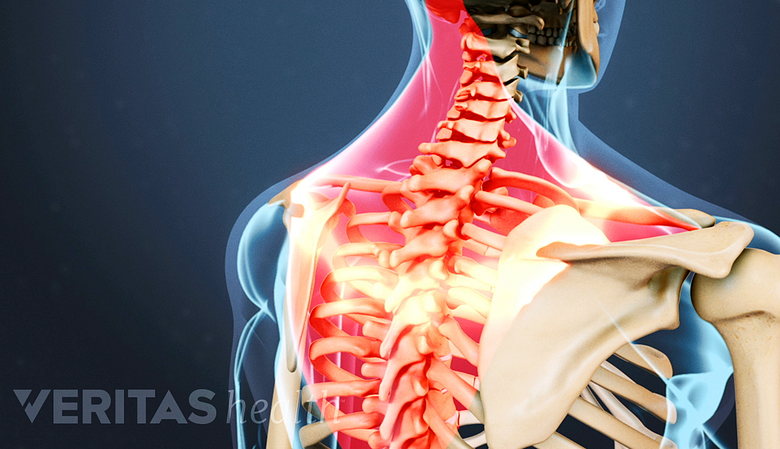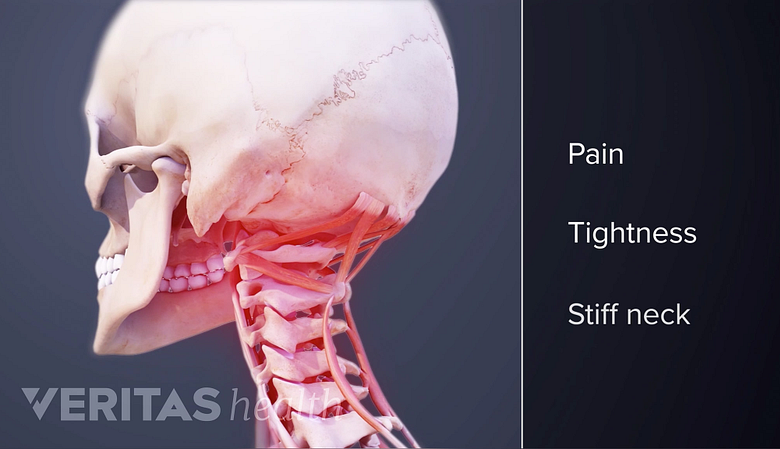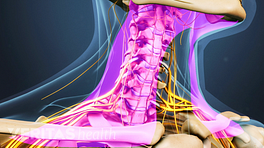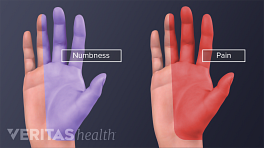Painful neck symptoms from poor posture can range anywhere from sharp pain that prevents normal movements to a dull ache that becomes unbearable by day’s end. When the neck hurts, most people want immediate relief. However, while exercises are typically part of a comprehensive treatment program for neck pain, it is important to keep in mind some precautions before starting.
In This Article:
- Neck Exercises for Neck Pain
- What to Consider Before Starting Exercises for Neck Pain
- Neck Stretches
- Neck Strengthening Exercises
- Trigger Point Exercises for Neck Pain
- 3 Easy Neck Exercises for Neck Pain Video
Consult a Medical Professional Prior to Physical Therapy
Consulting with a qualified healthcare professional can help with accurate diagnoses and effective treatments.
Before beginning any neck stretching or exercise program, it is advised to consult a health professional, such as a physical therapist, physiatrist, or chiropractor.
See Physical Therapy Exercise for Pain Relief
The goal of a health consultation is twofold:
- Get an accurate diagnosis. Depending on the cause of the neck pain or stiffness, different clinical diagnoses may dictate different types of exercises.
- Learn the correct form. Doing the right exercises but with the wrong form is a common mistake that can lead to lack of improvement or even increased pain and symptoms.
The neck’s vertebrae in the cervical spine are affected by so many other muscle groups (such as the back, shoulder, and chest), it may also be necessary to have a practitioner perform soft tissue work such as massage and manual stretching in conjunction with neck exercises.
Neck Exercises Should Not Cause Pain
If an exercise exacerbates neck pain, it should be stopped immediately.
While neck stretching and exercises may be somewhat uncomfortable when performed as part of a treatment program for neck pain, they should not cause or exacerbate neck pain.
If a neck exercise is painful or does not feel right, it should be stopped and a medical evaluation should be sought.
Manage Pain Well Enough to Perform Neck Exercises
Medications may be taken to provide short-term pain relief before engaging in exercises.
Sometimes neck pain must be reduced before the neck can move enough to do exercises. In such cases, a doctor may suggest one or more of the following:
- Over-the-counter medications, such as non-steroidal anti-inflammatory drugs (e.g. ibuprofen), to alleviate pain and reduce inflammation.
- Prescription anti-inflammatories and pain medications (corticosteroids, COX-2 inhibitors), as necessary, to manage severe pain.
- Alternative medicine, such as massage, manual manipulation, or acupuncture.
Once the pain is managed well enough to start improving movement in the neck, physical therapy exercises can begin and help facilitate a stronger, more flexible neck, as well as a further reduction in pain.
When to Seek Immediate Medical Attention
Increased pain, stiffness, or other concerning symptoms must be reported to a doctor.
In some cases, neck pain could indicate a serious underlying condition that needs to be evaluated by a physician. Patients are advised to seek medical attention if neck pain is accompanied by any of the following:
- Symptoms that radiate into the arm, such as pain, tingling, numbness, and/or weakness
- Pain following an accident or fall
- Pain that does not subside within a few days
- Coordination or balance problems
- Fever, chills, or nausea
See Understanding Hand Pain and Numbness
If neck pain is the result of a serious underlying condition, such as meningitis or cancer, neck exercises will not help and could delay receiving a time-sensitive treatment.













